Group homepage launched
Since our stellar astrophysics group reached a certain critical mass, we launched a group homepage. Please have a look and follow recent research news there from now on.
Two postdoctoral fellows joining
I am very happy to welcome Dr. Ingrid Pelisoli from Porto Alegre, Brazil, and Dr. Joris Vos from Valparaiso, Chile, to Potsdam. They joined my group in July 2018. Here comes a picture of our very first group meeting.
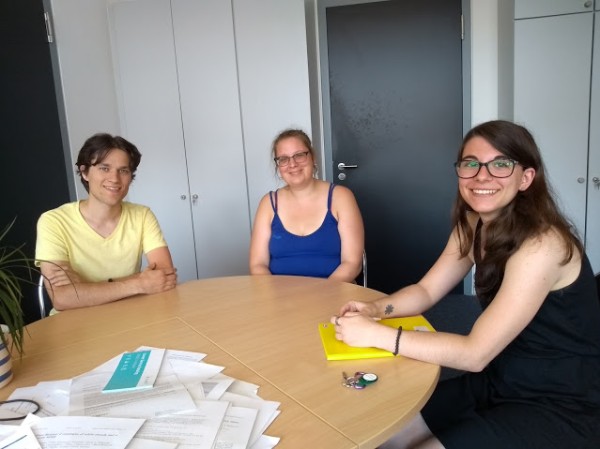
Stellar astrophysics in Potsdam
In April 2018 I started a professorship in stellar astrophysics at the University of Potsdam. Besides teaching and other new challenges, I am now trying to build up a research group. The first step was already successful, because Veronika Schaffenroth also moved to Potsdam. The institute is located at the university campus Golm. In a nice and golden house ...

Superman und die heißen Zwerge
The June issue of the popular German science magazine Bild der Wissenschaft includes a nice article about hot subdwarfs named "Superman and the hot dwarfs" (Bild der Wissenschaft, Juni 2017, S.44-49). It covers the main topics of our current research and the author was in contact with me before publication.
Starting a research group
In March 2017 Veronika Schaffenroth moved to Tübingen and became the first member of my research group. As a PostDoc she will work with me on several projects related to close binary hot subdwarfs and high velocity stars.
First conference on fast stars in Bamberg
From 16 to 19 August 2016 we organized the first conference dedicated to runaway and hypervelocity stars ever. The meeting attracted 60 experts on all aspects of this new topic from all over the world. Theorists proposed their ideas for the acceleration of stars to velocities sometimes sufficient to leave the Galaxy. Observers reported their latest discoveries of fast stars and the bock shocks they produce, when passing through the interstellar medium. I learned that this field became quite diverse as new ideas are put forward constantly and are challenged by new discoveries, which make things more complicated. The Gaia mission will be a game changer for sure!
Extremely fast hot subdwarf binary discovered
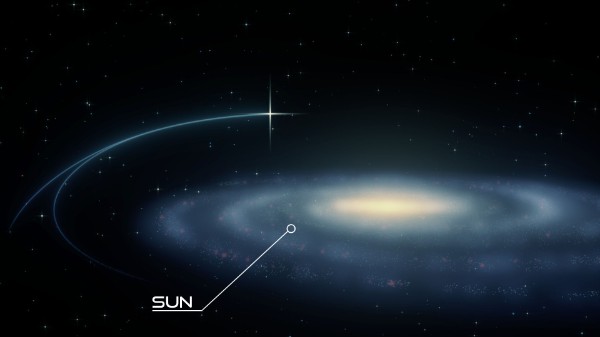
Searching for hypervelocity hot subdwarfs similar to the prototype US 708 we studied the known fast sdB PB 3877 in detail using the Keck telescope. We were very surprised, when we saw that this star is not travelling alone. The companion, a cool low-mass main sequence star, has a wide orbit. Such a fragile system is not likely to be accelerated to its high velocity by any known mechanism, but might belong to the kinematically most extreme halo population. Such stars can be used to measure the total mass of the dark matter in our Galaxy, which turns out to be higher than expected by other studies. This study has been published as a letter to the Astrophysical Journal (Nemeth et al. 2016, ApJ, 821, L13).
Press Releases: Keck Observatory, University Erlangen
Hot subdwarfs - Late Night
In the aftermath of the gigantic media echo triggered by our publication about the hypervelocity hot subdwarf star US 708, I was given the rare opportunity to promote our science in a television interview, which was aired nation-wide by the German TV station Sat 1 in October 2015 (DCTP News & Stories). Although it was late at night, some people might have seen it ...
Hot subdwarf family gathering in Oxford
A workshop from the biannual series of meetings dealing with hot subdwarf stars and related objects took place in Oxford from 19 to 24 July 2015. This year we aimed at broadening the science discussed and included related subjects like low-mass white dwarfs, horizontal branch stars in globular clusters or red giant cores. The meeting attracted a record-breaking number of more than 76 people and turned out to be very successful both scientifically and socially. Many thanks to Tony Lynas-Gray, who did a great job organizing this workshop. (Link)
EREBOS Large Programme granted
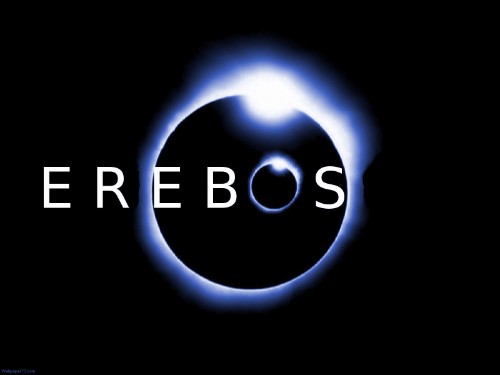
To study the influence of substellar companions on late stellar evolution, we formed an international collaboration and were granted a Large Programme at the ESO-VLT (Eclipsing Reflection Effect Binaries from the OGLE Survey, EREBOS, V. Schaffenroth, B. N. Barlow, S. Geier, et al.). Our goal is to observe a newly discovered sample of eclipsing hot subdwarf binaries with low-mass companions, determine the fundamental parameters of those systems and search for substellar companions like brown dwarfs and hot Jupiter planets. In addition to the spectroscopic follow-up with the FORS2 instrument at the VLT, we will use smaller telescopes in the Southern hemisphere to obtain photometry.
Reviews: Hot Subdwarfs - Small stars of high importance
Following the Ludwig Biermann Award for young astronomers I received at the Tagung der Astronomischen Gesellschaft in Bamberg 2014, I was invited to write two review articles about my work in hot subdwarf stars. One will be published in a special edition of the Astronomical Notes (Link), the other one was published in the April 2015 issue of the popular German astronomy magazine Sterne und Weltraum (Link).
The fastest unbound star in our Galaxy ejected by a thermonuclear supernova
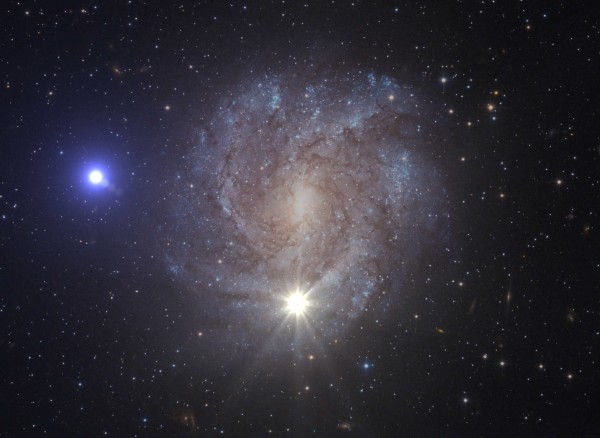
Using the 10m Keck and Pan-STARRS telescopes at Hawaii we found a star that breaks the Galactic speed record and travels with a velocity of about 1200 kilometers per second. This velocity is so high that the star is kicked out of our Galaxy. In contrast to the other known unbound stars this compact star wasejected from an extremely tight binary by a thermonuclear supernova explosion. These results haven been published in the March 6 issue of Science.
Stars like the Sun are bound to our Galaxy and orbit its center with moderate velocities. Only a few so-called hypervelocity stars are known to travel with velocities so high, that they are unbound. As acceleration mechanism for those stars a close encounter with the supermassive black hole in the centre of our Galaxy is usually invoked.
A team of astronomers led by myself observed the known high-velocity star US 708 with the ESI instrument at the Keck telescope to measure its distance and radial velocity component. Furthermore, we combined position measurements from digital archives with new positions measured from images taken in the course of the Pan-STARRS survey (PS1) to derive the tangential component of the stars velocity. Combining all those measurements we determined the total velocity of the star to be about 1200 kilometers per second, much higher than the velocities of the known stars in our Galaxy. Furthermore, we could exclude the Galactic center as possible origin of US 708 and with that the acceleration by the supermassive black hole.
The peculiar properties of US 708, which is in contrast to the other hypervelocity stars a fast rotating, compact helium star likely formed by interaction with a close companion, fit well into an alternative acceleration scenario. US 708 originally resided in an ultracompact binary system and transferred helium to a massive white dwarf companion. An ignition of the helium on the surface of the white dwarf triggered its explosion as thermonuclear supernova of type Ia. The surviving companion was then ejected and is now travelling with extreme velocity. These results provide observational evidence that there is a link between hypervelocity helium stars and supernova Ia, which might help us to understand the progenitors of those explosions better.
Press Releases: Keck Observatory, IfA Hawaii, Queens University Belfast, University Erlangen, Radboud University Nijmegen, Yunnan Observatory
Selected media coverage: New York Times, Spiegel, Süddeutsche Zeitung, NBC, National Geographic,
The Effects of Close-in Exoplanets on their Host Stars
In a contributed chapter to this book edited by Helmut Lammer and Maxim Khodachenko Eike Guenther and me are reviewing various possible effects that close substellar companion like planets or brown dwarfs might have on their host stars and the observational evidence gathered so far.
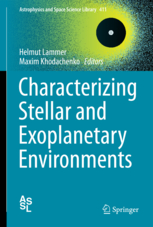
(Link)
Workshop - The Life and Death of Hot Stars
From 25 to 26 September I was co-chair of a workshop on hot stars. It was part of the Annual Meeting of the Astronomische Gesellschaft in Bamberg 2014. With 21 oral and 5 poster presentations covering a broad range of topic, the workshop was quite a success. (Link)
Germany and the Proliferation of Nuclear Weapons
The proliferation of nuclear weapons is one of the most serious problems for international security today. Since the end of the Cold War states like India, Pakistan and North Korea performed tests of nuclear explosive devices and the number of nuclear weapons states seems to be growing even more. Iran is pursuing actively a nuclear programme with unclear prospects and despite the catastrophe at Fukushima other states remain interested in the use of nuclear energy. In principle it is not possible to distinguish clearly between civil and military use of nuclear technology. The international regime to prevent the misuse of nuclear power and the dissemination of nuclear weapons is based on the Nonproliferation Treaty of 1970 and several other treaties and informal agreements. While the legal aspects of the nonproliferation regime are well studied, much less attention has been paid to the evolution of this regime, which was set up during the Cold War. Especially the role of the nonnuclear weapons states in this process remains unclear.
In my new book (in German) I explore the influence of the Federal Republic of Germany, one of the most influential nuclear threshold powers, on the formulation of the international nonproliferation regime as well as the role of nuclear energy in German foreign policy in general.
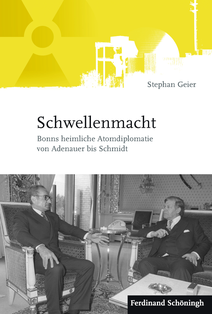
(Link)
Review by Reinhard Mutz, 12.1.2014, Deutschlandradio Kultur (in German)
(Link)
Review by Michael Knoll, Sehepunkte, Ausgabe 14, 1 (2014, in German)
(Link)
Review by Joachim Radkau, 30.1.2014, H-Soz-u-Kult (in German)
(Link)
Review by Sabine Steppat, 3.4.2014, Portal für Politikwissenschaften (in German)
(link)
A progenitor and an ejected donor remnant of a SN Ia explosion
Supernovae type Ia (SN Ia) are the best standard candles to measure the acceleration of the universe. However, the progenitors of those luminous events remain unknown. We discovered the extremely close (P=0.04987 d), eclipsing binary system CD-30°11223, which fulfills all requirements for the progenitor of an SN Ia via the so-called sub-Chandrasekhar double-detonation scenario. In this system a white dwarf is orbited by a core He-burning compact hot subdwarf star, which will start to transfer helium-rich material on short timescales. The ignition of He-burning in the newly formed envelope is predicted to trigger carbon-burning in the core although the WD is less massive than the Chandrasekhar limit. Furthermore, we showed that the hypervelocity sdO US 708 is likely to be the surviving donor remnant of such an event (Geier et al. 2013, A&A, 554, 54).
Massive Unseen Companions to Hot Faint Underluminous Stars from SDSS (MUCHFUSS)
Close binary hot subdwarf stars (sdBs), the helium-burning naked cores of red giants, are most likely formed by common envelope ejection. However, it is difficult to determine the nature of the close companions in sdB binaries. Close subdwarf binaries with massive white dwarf (WD) companions turned out to be candidates for SN Ia progenitors because those systems shrink further due to the emission of gravitational waves and merge. One of the best known candidate systems for this double-degenerate merger scenario is the sdB+WD binary KPD 1930+2752 (Geier et al. 2007, 464, 299). We found that a sizeable fraction of the sdB binary population could harbour massive compact companions, i.e. massive white dwarfs, neutron stars or even black holes (Geier et al. 2010, A&A, 519, 25).
Motivated by that we carry out a radial velocity survey (MUCHFUSS) to find sdBs with such massive compact companions, which should show very high radial velocity (RV) variability (Geier et al. 2011, 530, 28). Conducting more than 160 nights of spectroscopic and photometric follow-up, we can constrain the orbits and companion types of more than 30 sdB binaries up to now and put constraints on the fraction of massive compact companions. Papers about the orbital solutions of those binaries, constraints from photometry and a full RV catalogue of all binaries found in SDSS Data Release 7 are in preparation.
Binaries with substellar companions
It has been suggested that substellar objects like brown dwarfs and planets may be swallowed by their host star and that common envelope ejection could form hot subdwarfs. We found two short-period, eclipsing sdB binary systems. The companion mass of J082053+000843 turned out to be lower than the hydrogen-burning limit. This system hosts a brown dwarf companion and was the first such system discovered (Geier et al. 2011, ApJ, 731, L22). The similar eclipsing system J162256+473051, also harbouring a brown dwarf companion, was discovered subsequently.
These results add to the growing evidence that low-mass stellar and substellar companions may play an important role in the formation of sdB stars. The parallel discovery of single fast-rotating sdB stars (Geier et al. 2011, ApJ, 733, L13; Geier et al. 2013, A&A, 551, L4) may be another piece of evidence, because we have found that single sdBs have been found to be slow rotators in general (Geier & Heber 2012, A&A, 543, 149) . We therefore conclude that fast-rotating single sdBs star were formed by a common envelope merger of a low-mass, possibly substellar object with a red-giant core.
Hot Subdwarf Atmospheres
The abundance anomalies of hot subdwarf stars are very important to understand the physical properties of hot stellar atmospheres. Helium deficiency and peculiar metal abundances of sdB stars have been attributed to diffusion processes. To study the atmospheric peculiarities of sdB stars in detail, we analysed high-resolution spectra of more than a hundred stars (Geier 2013, A&A, 549, 110). Enrichment was found with increasing temperature for most of the heavier elements. The lighter elements are depleted and less affected by temperature. State-of-the-art diffusion models predict such patterns and are in qualitative agreement with our results. However, the highest enrichments measured cannot be explained with these models. Peculiar line shapes of the strongest metal lines in some stars indicate vertical stratification to be present in the atmospheres. Such effects are not accounted for in current diffusion models and may be responsible for some of the yet unexplained abundance anomalies.
Furthermore, we measured helium abundances and confirmed the correlation of helium abundance with temperature and the existence of two distinct sequences in helium abundance found previously. He-3 was found to be strongly enriched in stars clustering in a small temperature range. This phenomenon is most probably also related to diffusion processes in the atmosphere, but still poses a challenge to diffusion models (Geier et al. 2013, A&A, 557, 122).



